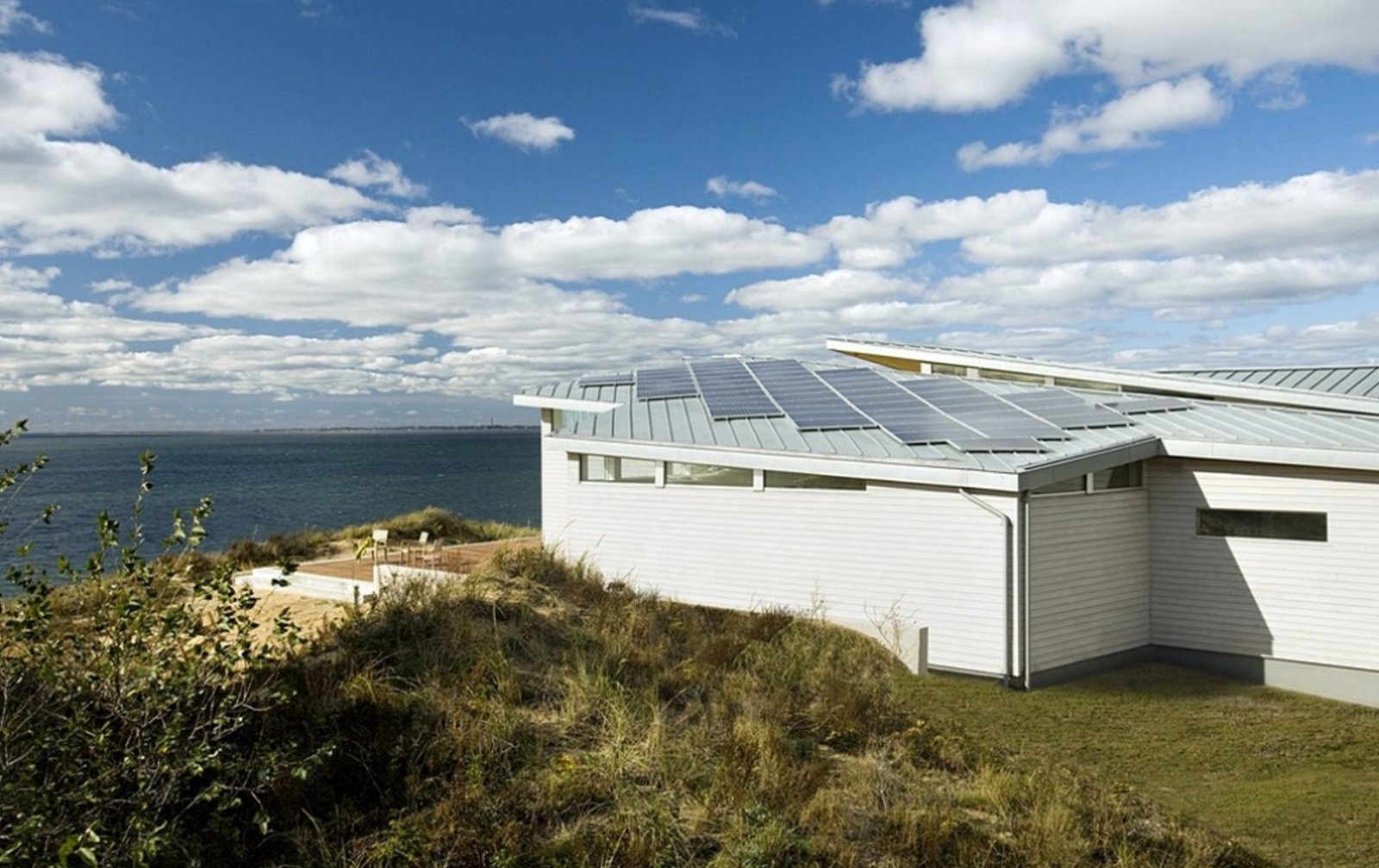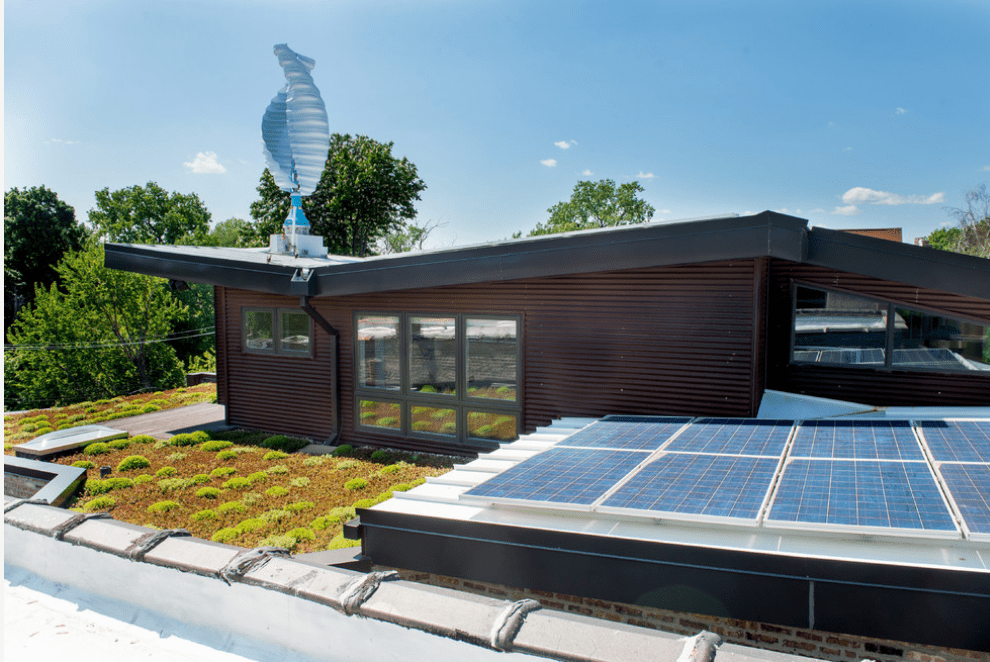If you live in an area with many windy days then it is a good idea to consider building a wind generator. The principle is very simple. A wind generator transforms the power of the wind into electricity.

Photo by Tripartite, inc – Look for home design design inspiration
Wind turbines or generators are an attractive and smart alternative and environmentally friendly source of energy because wind is inexhaustible and free energy source.
First, you need to know if a wind generator will be efficient for you. That depends on your budget and location. However, considering the rising energy costs, perhaps a wind generator is not really a bad idea after all.
STEPS
1| Before placing your wind turbine, you need to find the ideal location on your property. Take in consideration that the position of your wind generator has to be within a 4oo-feet free radius and 30-feet higher than any other object if you want it to work properly.
2| It is extremely important to determine the predominant direction of the wind in your area. You can find that following the movements of clouds or in which way the vegetation blows. You can pay attention in the windy days and see the direction of the storms. Also, you can contact the weather stations or the local airport for any information regarding the wind direction.
3| Place the generator batteries close to the generator to eliminate energy losses and thus to increase the efficiency of your device. However, the best are battery banks with a capacity of 24 or 48-Volts.
4| Whatever type of generator it must be securely anchored and built with steel pipe (two or three inch diameter). However, you can choose between a tilt-up variety and a wind generator tower, which it is a more strong option. On the other hand, tilt-up wind generator eases your access.
5| It is extremely important to find if your wind generator works to its full capacity. Therefore, you need to make or buy an anemometer to calculate the wind speed and to know if it is necessary to shut your device down during a storm.
6| Next step is to decide between a homemade and a commercial alternator (generator). All depends on power outputs that you need. However, if you are a handyman with mechanical skills, take in consideration a homemade generator style. It could work great for you.
7| Another important factor is choosing a rotor. Rotor is an important part of any wind generator. Its role is to catch, slow and transfer the power of the wind to the generator (alternator) that will transform this power into electricity. However, the size and the type of the rotor should be in accordance with your particular wind generator tower and power output. You need to make research online to find the right type of rotor for you.
8| It is critical to design a system that can rotate or move your tower in case of storm or very strong winds. That will protect your tower from damages. You can also, check out online for these kinds of systems.
9| Your wind generator cannot be completed without a system that can regulate the power when all battery banks are fully charged. However, you should provide an outlet for this build-up. A solution is to turn on some connected lights or perhaps you can find other solutions such as bridge rectifiers, diodes or shunt regulations.
10| You need also to find the best method to transfer the wind power from rotor down to the generator. You can use for this purpose, slip rings or a pendant cable.
A Wonderful Eco Friendly Element of Interior Design – Bamboo (howtobuildahouseblog.com)


